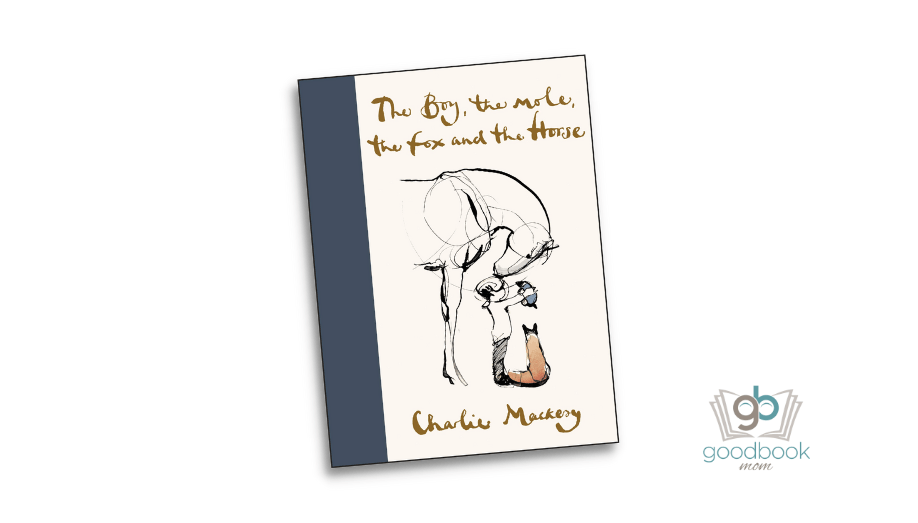
Summary
This graphic novel is about a boy who seems lonely and depressed at the beginning of the book. He talks with a mole and asks many questions musing over what is the purpose of being here, what is success, what keeps you going, etc. Along the way, the dialogue and company expand to include a fox and a horse. The boy is encouraged to keep going, press on, know he is not alone, and look back at how far he has come.
Reading Level: 8+
Mom Thoughts
[This review is specifically for the graphic novel, not the animated story version]
The Boy, the Mole, the Fox, and the Horse, is a New York Times, Wall Street Journal, and USA Today Bestseller and is written for anyone as young as eight to eighty-eight. It has been touted as holding profound truths for people suffering with depression and mental health issues and providing anyone with a heartwarming, encouraging story.
The text itself is in the author’s own handwriting. This can be described as using a fine- tip to thick-tip pen in a mixture of print and cursive. I did find this challenging to read as an adult, and I could not imagine a child who uses cursive to pick up all the nuances in this penmanship independently. The illustrations were simplistic in design using the same pen the author used to write the text. They remind me of rough sketches one would create on a napkin or preliminary sketches one would use as a framework prior to filling in with shading and color, mostly in black and white. This was not my personal favorite, but I could see how others might be attracted to this drawing style as it conveys authenticity and goes along with the message of the book.
As far as the content, this book did not read as a storyline with a plot unfolding. It read as if someone was repeating cliches, writing sayings, or general advice that was unrelated to everything else. There were some things said that were true such as, “We are strongest when we show weaknesses,” and “Asking for help isn’t giving up.” However, most of the advice given is not compatible with a Biblical worldview. Many one-liners were partially true or false altogether. Examples include the following: success is to love, being kind to yourself is one of the greatest kindness, love brings you home when you feel lost, being honest is interesting, and one of the greatest freedoms is how we react to things. One of the lines that was most incompatible with a Biblical worldview was the boy said his best discovery was,“I am enough as I am.”
As Christians, we know that the chief end of man is to glorify God and enjoy Him forever. We also know that apart from God’s salvific work, we are sinners – completely lost, at enmity with God, severing fellowship with God, and justly deserving of death. In God’s great mercy, He saved us, not because we were enough, good, or righteous, but only by His mercy, by grace through faith alone in Jesus. It is hard to pass up a book that doesn’t have any language issues, sexual content, disrespectful attitudes, etc. in this day and age, but this book champions the platitudes common in secular culture that have sadly been invading church culture as well. As Christian parents committed to teaching our children diligently in accordance with a Biblical worldview, we have to be on guard, using Scriptural truth as our plumbline, knowing the best lies often sound the most attractive and appeal to many.
This review was written by Good Book Mom contributor, Emily. To learn more about Emily, click HERE.
This post may contain affiliate links. Please read our disclaimer for more info.

This is a Stop and Think Book
We would advise to be very cautious with this book.

